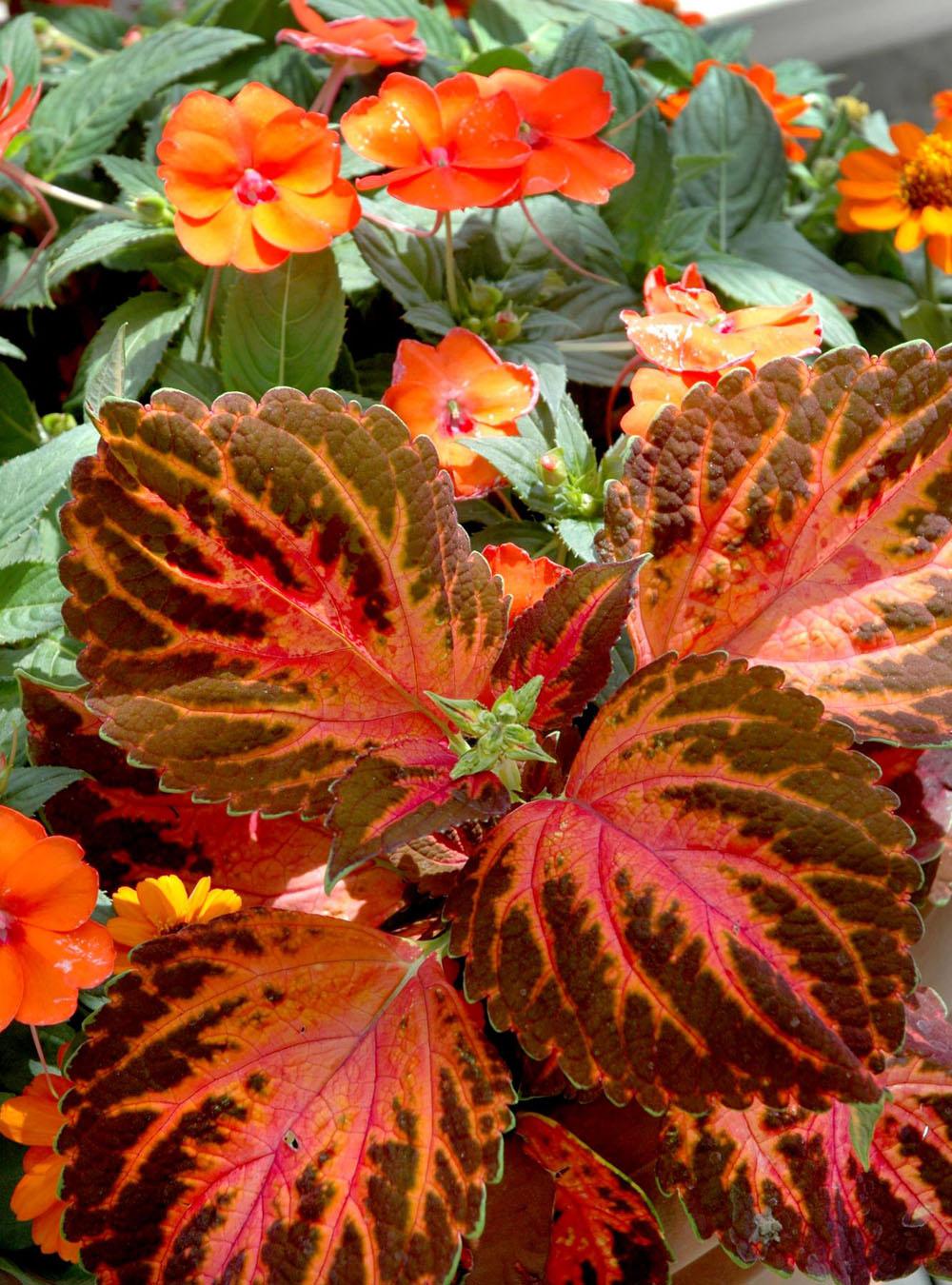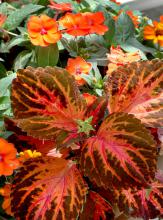Information Possibly Outdated
The information presented on this page was originally released on May 24, 2007. It may not be outdated, but please search our site for more current information. If you plan to quote or reference this information in a publication, please check with the Extension specialist or author before proceeding.
Orange will grab all garden visitors
By Norman Winter
MSU Horticulturist
Central Mississippi Research & Extension Center
Orange is a color in the garden that cannot be overlooked. It just reaches out and grabs you. I recently wrote about blue, the complementary or opposite color for orange, and said this was a marriage made in gardening heaven. Whether you want a marriage or not, orange can stand and dazzle all on its own.
On a color wheel, orange is between yellow and red and is the hallmark color of the hot side of the wheel.
If you have only a small area for planting, this could be the color for you. If orange sounds too bold, you can always tone it down by using its cousins: apricot, coral and salmon.
Mention orange in the garden, and the first thought may be lantanas, zinnias or rudbeckias, all known for enduring long, hot summers. Never underestimate the effect of orange and all its relatives on the shade garden. The shade garden can go relatively unnoticed or undefined, but add some orange or apricot, and look out.
There is another way to look at orange in the shade garden. We think of the shade garden as cooler because of the lack of light. When we place orange there, we mentally warm it up.
The native Florida azalea is stunning in the spring. You can drive down a road, turn a corner, and there it is in someone's yard, glowing like it is on fire. The other common name is Florida Flame. It's more cold hardy (zone 6) than many give it credit.
For a long season of orange tones in the shade garden, your first consideration must be impatiens. There are so many to choose from that you can literally hand-select shades of orange and flower shapes like traditional single petal, semi-double or the perfect rose form. We can even choose the exotic looking New Guinea impatiens.
Every year I am amazed by the colors still showing in the early fall where gardeners have kept their impatiens watered and fed through the long summer. The show in the landscape almost rivals the azalea bloom.
Another must to consider for the summer shade garden is the begonia. The award-winning Dragon Wing is called red, but I see it actually on the orange side of the scale. No begonia is prettier or easier to grow in the landscape or a container. Many begonia series have flowers bordering on orange.
Lastly, don't forget about orange foliage for the shade garden. When I think of colorful orange leaves, coleus comes to mind. These can add a tropical touch and can be used with ferns or hostas. Don't be afraid to partner them with impatiens. Everyone has some orange coleus selections. I love the selections called Rustic Orange, Freckles and Stained Glassworks Copper.
If your shade garden goes unnoticed or simply needs to be perked up, try a little orange. You will be glad you did.



